Mercedes B Class VS Ford Kuga – Specs, Efficiency & Price Comparison
Which model is the better choice – the Mercedes B Class or the Ford Kuga? We compare performance (238 HP vs 243 HP), boot capacity (455 L vs 412 L), efficiency (0.80 L vs 0.90 L), and of course, the price (33100 £ vs 34200 £).
Find out now which car fits your needs better!
The Mercedes B Class (MPV) is powered by a Plugin Hybrid, Petrol MHEV or Diesel engine and comes with a Automatic transmission. In comparison, the Ford Kuga (SUV) features a Petrol, Full Hybrid or Plugin Hybrid engine and a Manuel or Automatic gearbox.
When it comes to boot capacity, the Mercedes B Class offers 455 L, while the Ford Kuga provides 412 L – depending on what matters most to you. If you’re looking for more power, you’ll need to decide whether the 238 HP of the Mercedes B Class or the 243 HP of the Ford Kuga suits your needs better.
There are also differences in efficiency: 0.80 L vs 0.90 L. In terms of price, the Mercedes B Class starts at 33100 £, while the Ford Kuga is available from 34200 £.
Compare all the key specs now and find out which model fits your lifestyle best!
In the ever-competitive compact SUV segment, the Ford Kuga and Mercedes B-Klasse both vie for attention with distinct offerings. The Ford Kuga stands out with its sporty design, agile handling, and impressive fuel efficiency, making it a versatile choice for urban and rural explorers alike. On the other hand, the Mercedes B-Klasse impresses with its luxurious interior, advanced technology features, and smooth ride quality, appealing to those who prioritize comfort and elegance in their daily drive.
Mercedes B Class
The Mercedes-Benz B-Class offers a blend of practicality and luxury that sets it apart in the compact MPV segment. Its spacious and versatile interior is complemented by high-quality materials and a sleek design, making it ideal for both families and individuals seeking a touch of elegance on their daily commute. Advanced technology and safety features round out the package, ensuring a comfortable and secure driving experience.
details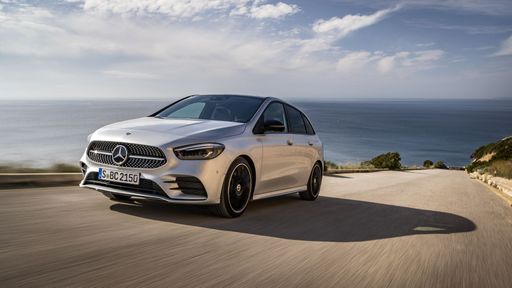 @ group-media.mercedes-benz.com
@ group-media.mercedes-benz.com
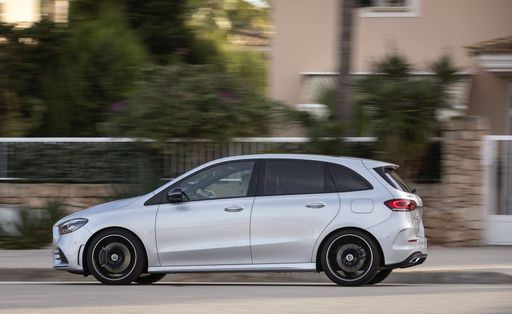 @ group-media.mercedes-benz.com
@ group-media.mercedes-benz.com
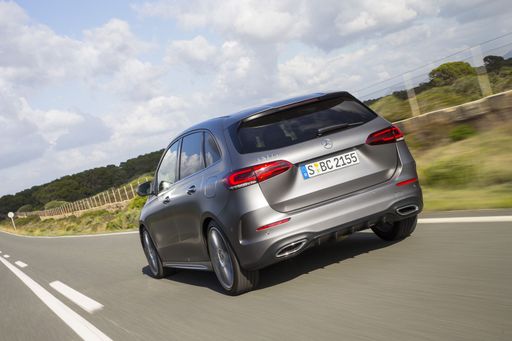 @ group-media.mercedes-benz.com
@ group-media.mercedes-benz.com
 @ group-media.mercedes-benz.com
@ group-media.mercedes-benz.com
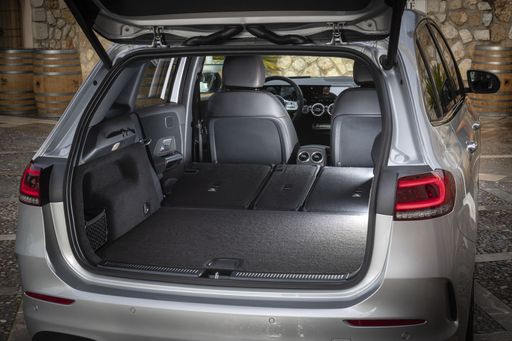 @ group-media.mercedes-benz.com
@ group-media.mercedes-benz.com
Ford Kuga
The Ford Kuga stands out in the realm of compact SUVs with its sleek design and dynamic performance capabilities. Its spacious interior is thoughtfully designed to provide comfort and practicality for both driver and passengers, making it an ideal choice for families and adventurers alike. Advanced technology and safety features further enhance the driving experience, ensuring a seamless blend of innovation and reliability on the road.
details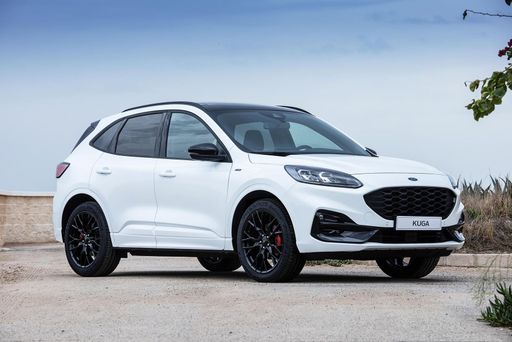 @ kuga.fordpresskits.com
@ kuga.fordpresskits.com
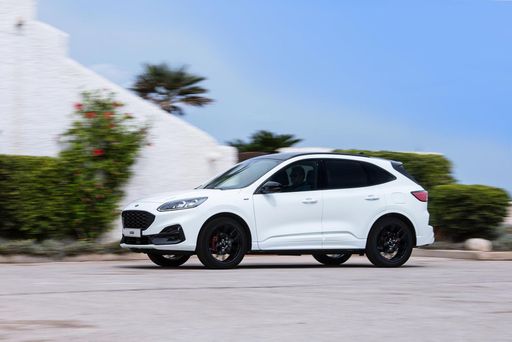 @ kuga.fordpresskits.com
@ kuga.fordpresskits.com
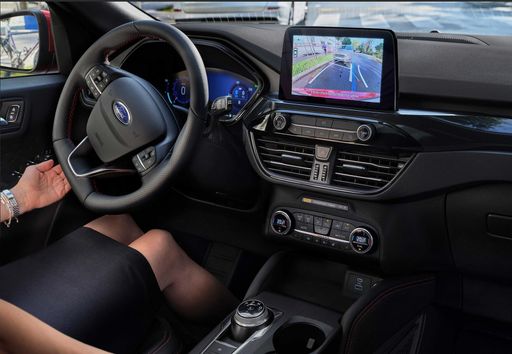 @ kuga.fordpresskits.com
@ kuga.fordpresskits.com
The Battle of Versatility: Ford Kuga vs. Mercedes B-Klasse
In the dynamic world of automobiles, the Ford Kuga and Mercedes B-Klasse stand out as versatile performers, each offering a blend of innovation, technology, and efficiency. As two of the most sought-after models in the SUV and MPV segments, respectively, they cater to different tastes and requirements. Let's delve into their technical prowess and innovative features to see how they stack up against each other.
Engine Performance and Efficiency
The Ford Kuga offers a range of engine options, including petrol, full hybrid, and plugin hybrid variants, delivering power outputs between 150 to 243 horsepower. With options for both manual and automatic (CVT) transmissions, and drive options that include both front-wheel and all-wheel drive, the Kuga is designed for flexibility and choice. Its noteworthy fuel consumption ranges from an impressive 0.9 to 6.4 liters per 100 kilometers, the lowest figure being achieved by the plugin hybrid variant, which boasts an electric range of 69 kilometers.
On the other hand, the Mercedes B-Klasse mainly features petrol MHEV, diesel, and plugin hybrid models, with outputs ranging from 116 to 238 horsepower. The B-Klasse runs on an automatic transmission with a dual-clutch system, ensuring seamless shifting. The plugin hybrid version provides an exceptional electric range of 83 kilometers and a fuel consumption low of 0.8 liters per 100 kilometers. These numbers highlight Mercedes' focus on blending sustainability with performance.
Size, Space, and Practicality
In terms of dimensions, the Ford Kuga stands tall as an SUV with a length ranging from 4604 to 4645 mm, a width of 1882 mm, and a height of up to 1681 mm. The Kuga is suitable for families, offering 5 seats and a generous trunk capacity of 412 liters.
Conversely, the Mercedes B-Klasse, being an MPV, is slightly more compact with a length of 4419 mm, a width of 1796 mm, and a height of 1562 mm. Nevertheless, it surprises with a larger trunk capacity of up to 455 liters, making it practical for day-to-day utility while maintaining its sporty, sleek aesthetic.
Performance and Driving Dynamics
The Ford Kuga accelerates from 0 to 100 km/h in times ranging between 7.3 to 9.5 seconds, depending on the engine selected, and can reach top speeds up to 200 km/h. With a torque output of 240 Nm and its available all-wheel-drive system, the Kuga promises a robust and consistent driving experience.
The Mercedes B-Klasse, meanwhile, offers quicker acceleration in some models, with 0 to 100 km/h times as sharp as 6.5 seconds and top speeds reaching a thrilling 250 km/h. Torque figures reach up to 450 Nm in the higher-powered variants, showcasing its spirited drive credentials.
Environmental Impact and Efficiency
Both models incorporate Eco-friendly technologies. The Kuga holds a CO2 efficiency classification between E and B, revealing its varied efficiency depending on the configuration, with CO2 emissions as low as 20 g/km for the plugin hybrid.
The B-Klasse is similarly efficient, with CO2 emission classifications ranging from E to B and emissions as low as 18 g/km, achieved by the plugin hybrid. Mercedes' commitment to reducing environmental impact is clear with these commendable figures.
Conclusion: Choosing Your Champion
The Ford Kuga and Mercedes B-Klasse each bring something unique to the table. If you're seeking the rugged versatility and off-road capabilities of an SUV with a wide choice of powertrains, the Ford Kuga might be your perfect match. Alternatively, if you desire the refined comfort and urban agility of an MPV, infused with advanced technology and eco-friendliness, the Mercedes B-Klasse stands as a formidable contender. Ultimately, your lifestyle and preference will determine which vehicle emerges as your champion in this exciting automotive showdown.

|

|
|
|
|
Costs and Consumption |
|
|---|---|
|
Price
33100 - 52500 £
|
Price
34200 - 45000 £
|
|
Consumption L/100km
0.8 - 6.9 L
|
Consumption L/100km
0.9 - 6.8 L
|
|
Consumption kWh/100km
-
|
Consumption kWh/100km
-
|
|
Electric Range
83 km
|
Electric Range
69 km
|
|
Battery Capacity
12.90 kWh
|
Battery Capacity
1.1 - 14.4 kWh
|
|
co2
18 - 156 g/km
|
co2
20 - 154 g/km
|
|
Fuel tank capacity
35 - 51 L
|
Fuel tank capacity
42 - 54 L
|
Dimensions and Body |
|
|---|---|
|
Body Type
MPV
|
Body Type
SUV
|
|
Seats
5
|
Seats
5
|
|
Doors
5
|
Doors
5
|
|
Curb weight
1405 - 1745 kg
|
Curb weight
1526 - 1859 kg
|
|
Trunk capacity
405 - 455 L
|
Trunk capacity
412 L
|
|
Length
4419 mm
|
Length
4604 - 4645 mm
|
|
Width
1796 mm
|
Width
1882 mm
|
|
Height
1562 mm
|
Height
1673 - 1681 mm
|
|
Payload
505 - 550 kg
|
Payload
541 - 550 kg
|
Engine and Performance |
|
|---|---|
|
Engine Type
Plugin Hybrid, Petrol MHEV, Diesel
|
Engine Type
Petrol, Full Hybrid, Plugin Hybrid
|
|
Transmission
Automatic
|
Transmission
Manuel, Automatic
|
|
Transmission Detail
Automat. Schaltgetriebe (Doppelkupplung)
|
Transmission Detail
Schaltgetriebe, Automatikgetriebe
|
|
Drive Type
Front-Wheel Drive, All-Wheel Drive
|
Drive Type
Front-Wheel Drive, All-Wheel Drive
|
|
Power HP
116 - 238 HP
|
Power HP
150 - 243 HP
|
|
Acceleration 0-100km/h
6.5 - 10 s
|
Acceleration 0-100km/h
7.3 - 9.9 s
|
|
Max Speed
200 - 250 km/h
|
Max Speed
195 - 200 km/h
|
|
Torque
200 - 450 Nm
|
Torque
240 Nm
|
|
Number of Cylinders
4
|
Number of Cylinders
3 - 4
|
|
Power kW
85 - 175 kW
|
Power kW
111 - 178 kW
|
|
Engine capacity
1332 - 1991 cm3
|
Engine capacity
1496 - 2488 cm3
|
General |
|
|---|---|
|
Model Year
2024 - 2025
|
Model Year
2024
|
|
CO2 Efficiency Class
B, D, E, F
|
CO2 Efficiency Class
E, D, B
|
|
Brand
Mercedes-Benz
|
Brand
Ford
|
Mercedes B Class
A New Era of Compact Luxury: The Mercedes-Benz B-Class
The Mercedes-Benz B-Class represents a perfect blend of luxury, utility, and cutting-edge technology, standing as a testament to the brand’s commitment to innovation and class. This compact luxury MPV is tailored for motorists who seek practicality without compromising on performance and style.
Performance and Efficiency: A Comprehensive Overview
The new B-Class range comes with a selection of powertrains, including petrol mild-hybrids, diesels, and plug-in hybrids, ensuring a wide array of choices for every driving preference. The power output ranges from 116 to 238 PS, offering a harmonious balance of power and efficiency.
Among the exciting options, the plug-in hybrid variant stands out with a fuel consumption rate as low as 0.8 L/100km and an electric range of up to 83 km. The petrol and diesel engines offer impressive efficiency, with consumption ranging from 5.1 to 7.1 L/100km, catering to both environmental consciousness and driving pleasure.
Innovative Technology: Staying Ahead of the Curve
Inside the B-Class, drivers will find an array of technology designed to enhance the driving experience. The latest MBUX infotainment system comes with a high-resolution touchscreen, voice activation, and a suite of connectivity features, making each journey both intuitive and enjoyable.
Mercedes-Benz has also incorporated advanced driver-assistance systems, including adaptive cruise control and lane-keeping assist, to enhance safety and convenience. These features ensure that the B-Class not only keeps up with the demands of modern drivers but also anticipates them.
Design and Luxury: A Compact Model with Presence
The Mercedes-Benz B-Class has been designed to offer maximum interior comfort while maintaining a compact external profile. The vehicle’s aerodynamic shape is complemented by a stylish front fascia and distinctive body lines, giving it a dynamic yet elegant appearance.
Inside, the B-Class doesn't skimp on luxury. With a high-quality finish, ergonomic seating, and comprehensive climate control systems, it delivers a refined environment for driver and passengers alike, echoing the luxurious feel synonymous with the Mercedes-Benz brand.
Customisation and Price: Tailored to Individual Tastes
The B-Class provides ample customisation options across its variants. From Advanced to AMG Line, each offers a unique set of features and aesthetic touches, allowing buyers to tailor the vehicle to their personal tastes.
Pricing for the B-Class starts at €38,413 and can go up to €60,577, reflecting the range of configurations available. While some may see this as a premium investment, the comprehensive offering of features, efficiency, and luxury justifies the cost.
Conclusion: The Future of Compact Luxury is Here
The Mercedes-Benz B-Class remains a standout choice in the compact luxury segment, thanks to its combination of state-of-the-art technology, refined design, and performance efficiency. Whether you're considering practicality, luxury, or a bit of both, the B-Class is poised to meet your needs with aplomb.
Ford Kuga
Discovering the Ford Kuga: An SUV for the Modern Age
The Ford Kuga has established itself as a versatile and reliable choice in the competitive SUV market. Combining sleek design with innovative technology, the Kuga offers a range of options to suit different driving preferences and needs. Let’s delve into the various technical details and pioneering features that make this vehicle stand out.
Design and Construction
The Ford Kuga embodies a contemporary design ethos, with dimensions that accommodate both functionality and style. Measuring between 4604 and 4645 mm in length, the Kuga is designed to offer ample interior space while maintaining a compact exterior profile. This is complemented by a width of 1882 to 1883 mm and a height ranging from 1650 to 1681 mm, ensuring a comfortable and commanding drive on the road.
Innovative Powertrains
With a diverse array of engine configurations, the Kuga caters to both traditional and eco-conscious drivers. The range includes 1.5-litre EcoBoost petrol engines, 2.0-litre EcoBlue diesel options, as well as an innovative 2.5-litre full hybrid and plug-in hybrid variants. The hybrid models, particularly the plug-in hybrid, offer impressive efficiency with a consumption as low as 0.9 L/100 km and an electric range of up to 69 km.
Performance and Efficiency
The Kuga delivers a robust performance with power outputs ranging from 120 PS to 243 PS, ensuring there is a model to match your driving style. The vehicle accelerates from 0-100 km/h in as little as 7.3 seconds, depending on the chosen powertrain. Notably, the plug-in hybrid versions allow for considerable fuel savings, making the Kuga a cost-effective option for long-term use.
Advanced Technology and Features
Ford has integrated the latest technology into the Kuga, enhancing both comfort and safety. The vehicle features multiple driving modes tailored to different terrains, advanced driver-assistance systems, and a user-friendly infotainment system that keeps all controls within easy reach. The intelligent all-wheel-drive system available on certain models provides enhanced grip and stability in challenging conditions.
Interior Comfort and Practicality
Inside the Kuga, you'll find a spacious cabin with seating for five, designed with both comfort and utility in mind. The boot space ranges from 405 to 435 litres, allowing for an impressive amount of luggage capacity. High-quality materials and smart design choices throughout the cabin ensure a premium experience, further enhanced by options like Vignale trims for those seeking added luxury.
A Sustainable Choice
With its focus on efficiency and reduced emissions, the Ford Kuga aligns with the growing demand for environmentally responsible vehicles. The CO2 emissions range from 20 to 155 g/km, placing many models in favourable efficiency classes, thus contributing to a more sustainable future.
Conclusion
The Ford Kuga stands out in the SUV segment by offering a perfect blend of performance, technology, and sustainability. Its versatility makes it an ideal choice for diverse lifestyles, from urban adventures to rural explorations. With its innovative features and design, the Kuga is a testament to Ford’s commitment to delivering high-quality vehicles suited to today's discerning drivers.
The prices and data displayed are estimates based on German list prices and may vary by country. This information is not legally binding.
